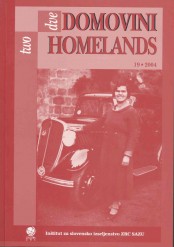Migration as a change of cultural relations by a new language map
Abstract
My starting point is a description of changes of the 'language map' which we have to consider in Europe, in the last decades particularly in Germany, and an analysis of these on the language level as well as on the socio-cultural level.
The language map in European countries has been changed by different processes of migration, not only in a temporary sense but also in a fundamental and long-term sense. Immigrant minorities brought new languages with them and imported a cultural diversity on the largest scale ever known in Europe. The majority has to accept that the position of its language as the national means of communication has to adopt a new relation toward minority languages. With modern migration, new social, political and cultural relations have been established. As these changes have generated several misunderstandings within the common cultural contact and political life, the present intercultural relations are not free of tensions.
In the second part of my paper I analyze (in view of learning processes on different levels) the new relations generated by migration:
– Migration and language cognition: consequences for language learning and language education of children, not only the minority children but also the majority children.
– Migration and the change of language relations by the process of building the European Union with about 15 official languages within their space (the new position of national languages will be weaker in the future).
– Cross-cultural conflicts as language-relation conflicts: the process of internationalization invites different groups to underline their own identity by their first language. Any attitude of language superiority as usual until now in national societies excludes other groups and generates intercultural communication problems.
In the third part of my contribution I examine the perspectives of protecting cultural diversity by means of a constructivistic concept of language cognition and language education. Within this context, examples of multilingual education in German schools are presented; these schools intend to co-educate pupils coming from different language groups as Europeans of tomorrow.
Downloads
Downloads
Published
How to Cite
Issue
Section
License

This work is licensed under a Creative Commons Attribution-NonCommercial-NoDerivatives 4.0 International License.
Authors guarantee that the work is their own original creation and does not infringe any statutory or common-law copyright or any proprietary right of any third party. In case of claims by third parties, authors commit their self to defend the interests of the publisher, and shall cover any potential costs.
More in: Submission chapter





